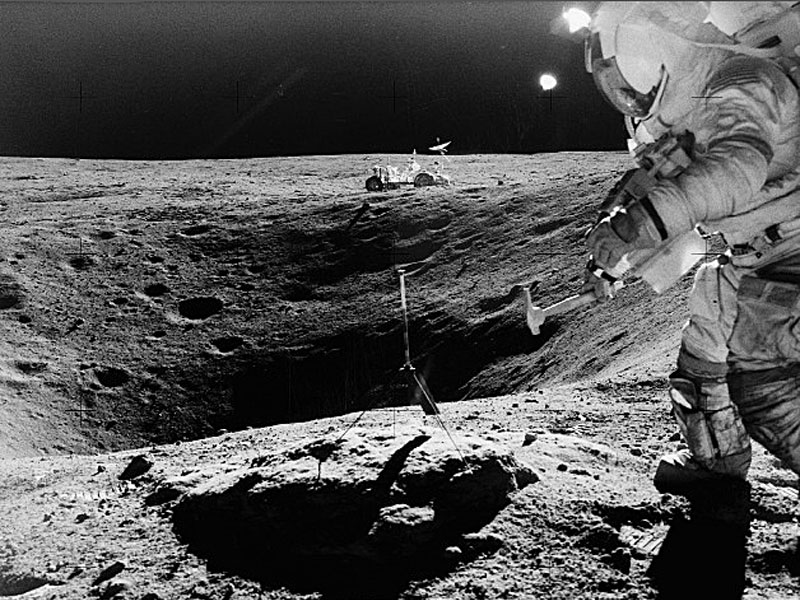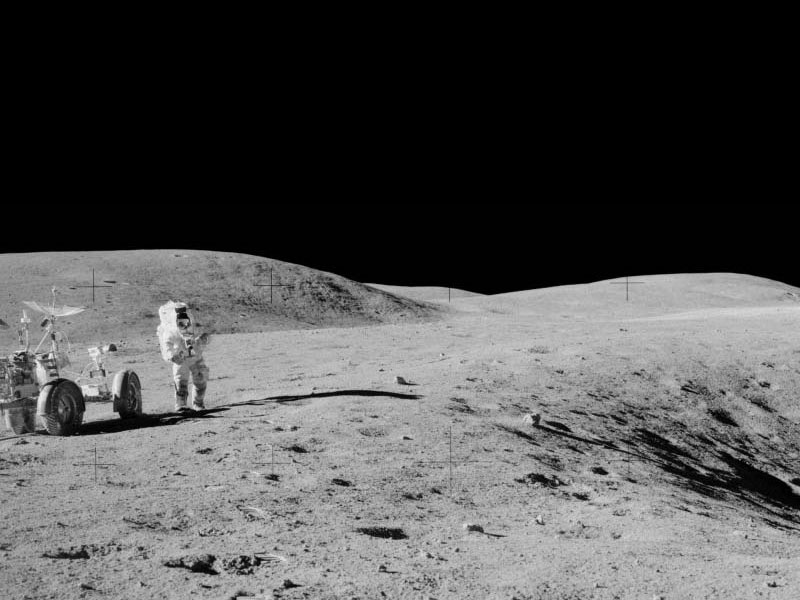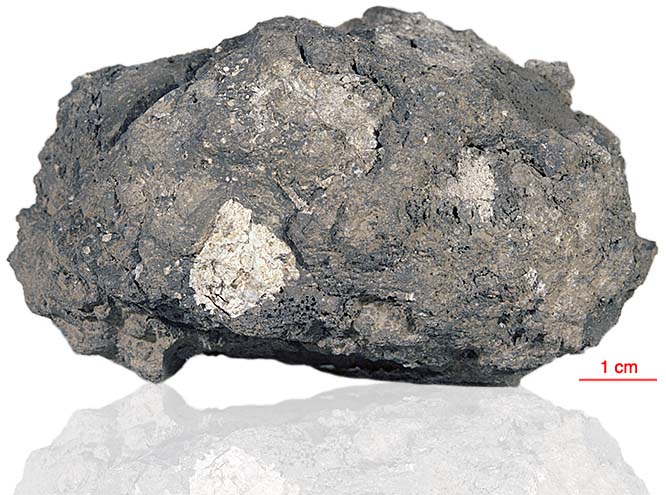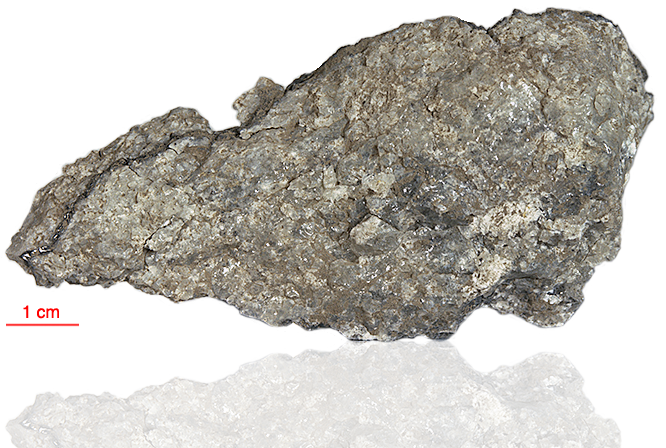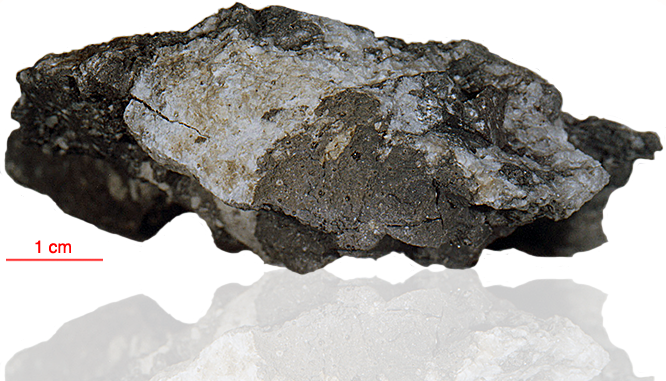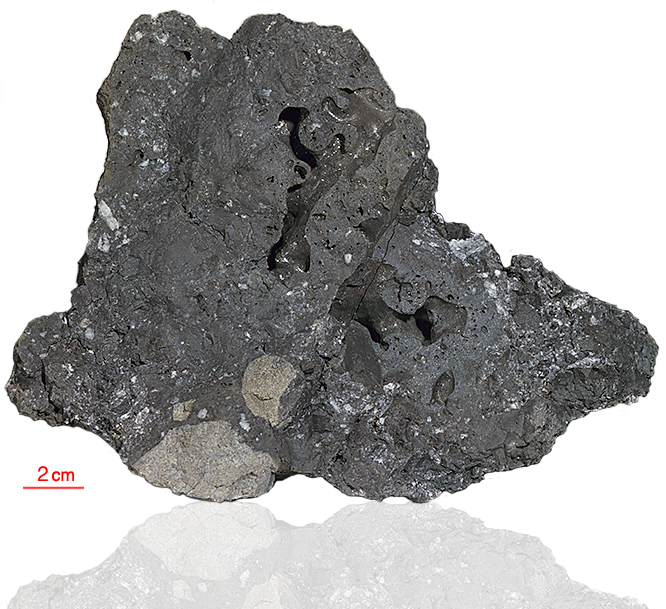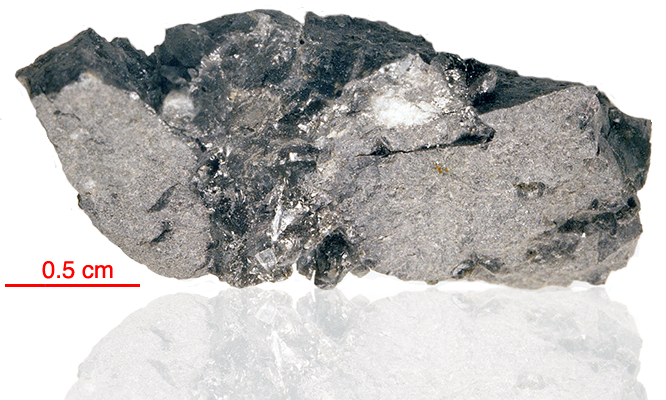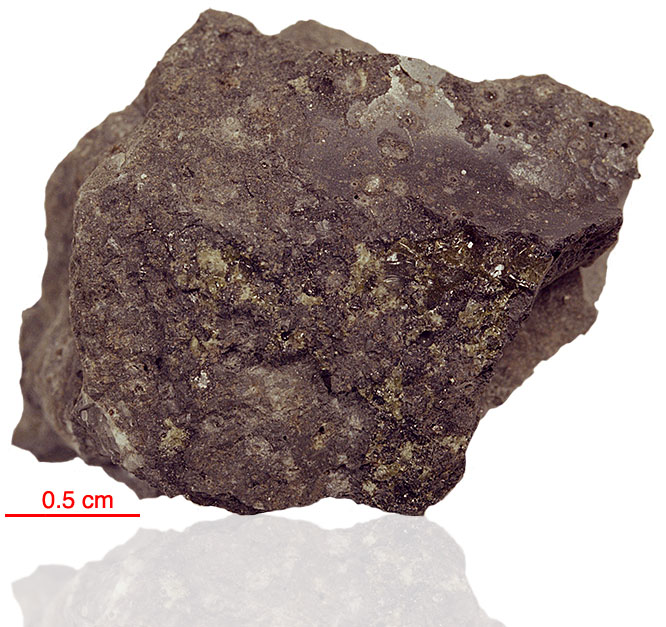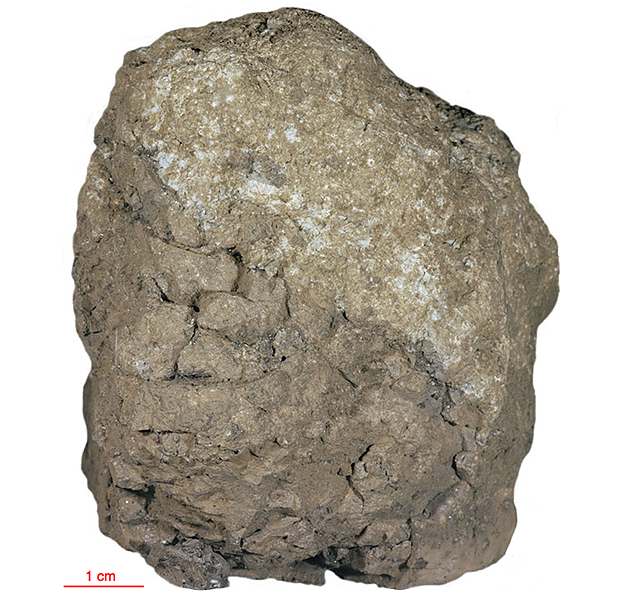
Fact sheet
Sample 61016 is the largest sample returned by the Apollo missions. It is known as ‘Big Muley’, having been named after Apollo 16 field geology team leader Bill Muehlberger. There is evidence to suggest the sample was ejected from South Ray crater although it was found perched on the east rim of Plum Crater. The top side of the boulder is rounded with thin patina and numerous micrometeorite zap pits; the remainder of the sample was below the lunar soil surface. The melt rock (which formed during a meteorite impact) is dated at 3.97 billion years.
The thin section shows the sample to be a breccia consisting of shocked anorthosite attached to a piece of troctolitic ‘melt rock’. Its main lithology is characterised by clasts of maskelynite, a form of glass that is formed by cold transformation of the mineral plagioclase. The rock also contains glassy and devitrified lithic clasts containing maskelynite intergrown with olivine (in the troctolite portion of the rock).
Further details of this and other Apollo samples are here: http://curator.jsc.nasa.gov/lunar/
The Apollo 16 landing site was in the hilly region around Descartes crater in the lunar highlands. The landing spot was chosen to allow the astronauts to gather geologically older lunar material (Descartes Formation and the Cayley Formation) than the samples obtained in the first four landings, which were in or near lunar maria.
The mission lasted 11.1 days, with a stay on the lunar surface of 71 hours. The crew were on the lunar surface for 20.2 hours during which they traversed approximately 27 kilometers and collected approximately 96 kilograms of samples.
Apollo 16 was launched on 16 April 1972.
